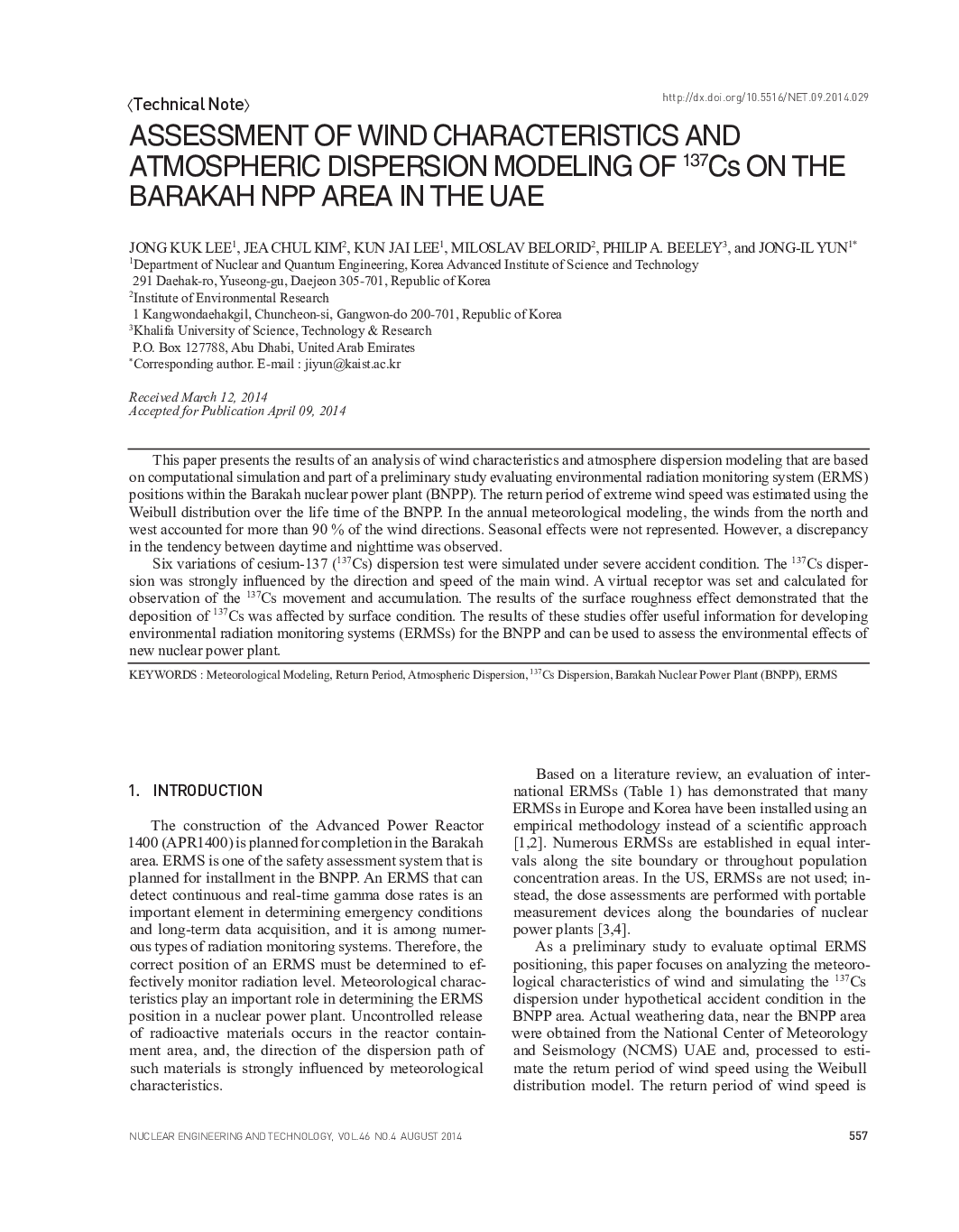| Article ID | Journal | Published Year | Pages | File Type |
|---|---|---|---|---|
| 1740037 | Nuclear Engineering and Technology | 2014 | 12 Pages |
This paper presents the results of an analysis of wind characteristics and atmosphere dispersion modeling that are based on computational simulation and part of a preliminary study evaluating environmental radiation monitoring system (ERMS) positions within the Barakah nuclear power plant (BNPP). The return period of extreme wind speed was estimated using the Weibull distribution over the life time of the BNPP. In the annual meteorological modeling, the winds from the north and west accounted for more than 90 % of the wind directions. Seasonal effects were not represented. However, a discrepancy in the tendency between daytime and nighttime was observed.Six variations of cesium-137 (137Cs) dispersion test were simulated under severe accident condition. The 137Cs dispersion was strongly influenced by the direction and speed of the main wind. A virtual receptor was set and calculated for observation of the 137Cs movement and accumulation. The results of the surface roughness effect demonstrated that the deposition of 137Cs was affected by surface condition. The results of these studies offer useful information for developing environmental radiation monitoring systems (ERMSs) for the BNPP and can be used to assess the environmental effects of new nuclear power plant.
